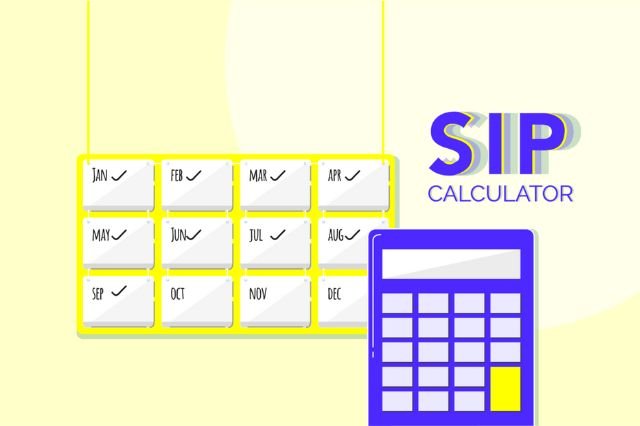Finance
Financial Freedom Through Online Learning: How to Leverage Affordable Education for Career Advancement


In today’s fast-paced world, the pursuit of financial freedom and career advancement is on the minds of many. The good news is that the digital age has opened up remarkable opportunities to learn, grow, and reach new heights through online education. This article will guide you through a list of ways to leverage affordable online learning for your career and financial well-being.
Unleash Your Potential with Online Learning
Online learning is a game-changer. It provides a flexible, accessible, cost-effective way to acquire new skills, expand your knowledge, and propel your career forward. Here are some key strategies to harness the power of online education:
High-Quality Courses at Affordable Prices
One of the most appealing aspects of online learning is the affordability factor. Many platforms offer free courses; paid courses are often significantly cheaper than traditional in-person classes. Moreover, you can avoid additional expenses such as commuting, textbooks, and accommodation. This is where the concept of high yield savings comes into play. By saving money on your education, you can channel those funds into a high-yield savings account, which can grow your savings account money over time.
Choose Reputable Online Platforms
When embarking on your online learning journey, selecting reputable platforms is crucial. Websites like Coursera, edX, Udemy, and Khan Academy offer various courses, from coding and digital marketing to business management and art history. You can find classes that cater to your interests and career goals, all from the comfort of your home.
Flexible Scheduling
Online learning accommodates your busy life. Whether you’re a working professional, a parent, or both, you can fit your courses into your schedule. This flexibility ensures you can continue earning while learning, making it a financially viable option.
Learn from Experts
Industry experts and professionals often teach online courses. This means you’re getting the most up-to-date and practical knowledge in your field. The skills you acquire can lead to career advancement and potentially higher earning potential.
Networking Opportunities
Online courses often provide networking opportunities through discussion forums, group projects, and events. These connections can be valuable for career growth and lead to job opportunities or collaborations.
Certifications and Credentials
Many online courses offer certificates or credentials upon completion. These can enhance your resume and demonstrate your commitment to professional development, potentially opening doors to higher-paying positions.
Keep Learning and Adapting
The job market is constantly evolving. To stay competitive and ensure long-term financial freedom, make a habit of continuous learning. Seek out new investing courses that align with your goals and interests. The more you invest in your knowledge, the better your financial prospects.
Explore Scholarships and Financial Aid
If finances are a concern, explore scholarship and financial aid options for online courses. Many organizations and institutions offer assistance, and you might qualify for financial support that makes your online learning even more affordable.
Set Clear Goals
As you embark on your online learning journey, set clear goals for your career. Define your goals and plan how your newfound skills and knowledge will lead to financial freedom. Having a roadmap can help you stay motivated and focused on your objectives.
Expand Your Network
Building a solid professional network is essential for career growth. Attend industry conferences, webinars, and meetups to meet like-minded individuals and potential employers. Join relevant online forums and LinkedIn groups to engage in discussions and stay updated on industry trends and job opportunities.
Develop Soft Skills
While technical skills are crucial, pay attention to the importance of soft skills. Employers highly value effective communication, teamwork, problem-solving, and adaptability. Cultivate these skills to complement your technical expertise.
Stay Resilient and Persistent
Success in high-demand fields often requires resilience and persistence. Embrace challenges, learn from failures, and stay committed to your goals. Your determination can set you apart from the competition and lead to long-term career success.
Final Thoughts
Financial freedom is not an overnight achievement but a steady progress and self-improvement journey. Online learning is a powerful tool that can propel you toward your financial goals. By leveraging affordable education, you can equip yourself with the skills and knowledge necessary for career advancement. Remember, every dollar you save on your education can be a step closer to financial freedom. So, start your online learning journey today, invest wisely, and watch your economic prospects grow.


Finance
Tips for Dealing with Insurance Companies in Florida Accident Cases


Dealing with insurance companies after an accident in Florida can be challenging. It’s important to know how to navigate these interactions to ensure you get the fair compensation you deserve.
The following tips will guide you through the process of effectively handling insurance companies in the aftermath of an accident.
Be Prepared with the Facts
Document Everything
Gather all necessary documentation related to the accident including:
- Police reports
- Medical records and bills
- Photographs of the scene and damages
- Witness statements
Understand Your Policy
Thoroughly review your insurance policy to understand what is covered and be clear about the coverage limits and any deductibles.
Communication with the Insurance Company
Initial Contact
The first step after an accident is notifying your insurance company promptly. However, this initial contact is crucial, and how you handle it can significantly impact the outcome of your claim. When reaching out:
- Prompt Reporting: Report the accident as soon as possible. Delays might raise questions about the authenticity of your claim.
- Stick to the Facts: Provide essential details about the incident without volunteering unnecessary information. Stick to the facts regarding the time, location, and parties involved.
- Avoid Admitting Fault: Refrain from admitting fault or speculating about the incident. Even a seemingly innocent statement could be used against you during the claims process.
Recorded Statements
Insurance adjusters may request a recorded statement regarding the details of the accident. While they might frame it as a routine procedure, it’s essential to approach this with caution:
- Politely decline to give a recorded statement until you have legal representation. This precaution ensures that your rights are protected, and you have guidance on what to disclose.
- Insurance adjusters may use recorded statements to their advantage, extracting statements out of context or emphasizing certain details. Having legal representation from an experienced accident attorney in Bradenton, Florida can help you navigate this process more safely.
Personal Details
When providing personal information during conversations with your insurance company, exercise discretion:
Basic Personal Information: Disclose only the basic personal details required, such as your name, address, and policy number.
Avoid delving into intricate details about the accident or your injuries during these initial communications. Such information can be better addressed with the guidance of legal representation.
Handling Insurance Adjusters
Be Polite but Firm
Maintain a polite yet assertive tone. Insurance adjusters may try to minimize your claim, but standing firm on your account and the seriousness of your injuries is crucial.
Understand Their Role
Adjusters’ primary goal is to save the company money. While they may seem friendly, they are not your advocates, so proceed with care in all interactions.
Dealing with Settlement Offers
Initial Offers
Be cautious of early settlement offers. They may not fully take into account the extent of your injuries or future medical expenses.
Seek Expertise
Consult with a personal injury lawyer before accepting any offers. They will help you understand if the offer is fair and negotiate on your behalf if it is not.
Know Your Worth
Calculate all the costs associated with the accident, including future expenses, when considering settlement offers to ensure you’re compensated for the full impact of the accident.
Legal Representation
Getting a Lawyer
Consider hiring a personal injury lawyer experienced in Florida law to navigate the claims process and to advocate for your best interests.
Contingency Fee Basis
Many personal injury attorneys work on a contingency fee basis, meaning they only get paid if you win your case, reducing the financial burden on you.
Lawyer-Client Privilege
Anything you discuss with your attorney is confidential. Use this to your advantage to get honest advice about your case.
Remember, insurance companies are businesses first and foremost, and their primary interest is in protecting their bottom line. By being informed, cautious, and proactive, you can better position yourself for a successful outcome in your Florida accident case.
When in doubt, seeking professional legal advice is your best strategy for dealing with the complexities of insurance claims.
Finance
What Are the Inputs and Outputs Expected from SIP and SWP Calculator?


Financial management is a critical aspect of our daily lives, whether we are budgeting for personal expenses, saving for retirement, or making investment decisions. With the complexities of modern finance, we need tools to help us make informed choices.
Financial calculators are indispensable tools for individual investors, students, and professionals alike. Whether you are managing your personal finances or working in finance related fields, these calculators empower you to make informed decisions, save time, and reduce the risk of financial mishaps.
In the ever-evolving world of finance, understanding and mastering these calculators is a valuable skill that can greatly contribute to your financial success. So, do not hesitate to explore the world of financial calculators and leverage their capabilities for a more secure financial future. Let us explore the popular ones in this article.
A SIP calculator and an SWP calculator are tools used to help investors plan and estimate the returns and withdrawals associated with their mutual fund investment.
SIP Calculator
A SIP is a method of investing in mutual funds where an investor contributes a fixed amount at regular intervals (typically monthly) into mutual funds. A SIP mutual fund calculator helps investors determine how their investments will grow over time based on the amount invested, the expected rate of return, and the investment horizon. Here is how it generally works:
Inputs: Monthly SIP investment amount, the expected annual rate of return (in percentage) and the investment duration (in years).
Outputs: The SIP calculator provides an estimate of the future value of the mutual fund investment, considering the compounding effect of the returns.
This helps investors in assessing how much wealth they can accumulate by making regular and disciplined investments in mutual fund schemes over a specific period.
SWP Calculator
An SWP is a method of withdrawing a fixed amount or a specified percentage of your investment from a mutual fund at regular intervals. This is the reverse of SIP, where you’re essentially turning your investments into a source of income. An SWP mutual fund calculator helps investors estimate the amount they can withdraw periodically without depleting their investment prematurely. Here is how it generally works –
Inputs: One time investment value in mutual fund, expected annual rate of return (in percentage), withdrawal frequency (e.g., monthly, quarterly) and the withdrawal amount.
Outputs: The SWP calculator provides an estimate of how long the investment is expected to last before it’s exhausted or the SWP period ends.
This helps investors plan for a steady stream of income while preserving their capital.
Conclusion
Both SWP calculator and SIP calculator can be useful tools for financial planning. It’s important to understand that the actual returns on investments can vary due to market conditions and the performance of the chosen mutual fund schemes.
Therefore, these financial calculators provide estimates based on the inputs provided, and actual results may differ. It’s essential to review your investments periodically and adjust your SIP or SWP as needed to meet or adjust your financial goals.
Many mutual fund companies and financial websites offer these calculators online for free, and you can use them to make informed decisions regarding your mutual fund investment.
Finance
A Pip in the Forex Market: A Comprehensive Guide


Pip, short for “percentage in point” or “price interest point,” is a standardised unit of movement in the currency market.
It represents the smallest price move that can be observed in the exchange rate of a currency pair. It is a term that you will hear often in forex trading, so here is a comprehensive guide on what a pip is.
Understanding Pips
To know more about it you need to understand it better.
Measurement of Movement
For most currency pairs, a pip is typically the fourth decimal place in the exchange rate. For example, a move from 1.1200 to 1.1201 signifies a one-pip movement.
In pairs involving the Japanese yen (JPY), where the exchange rates are often quoted with two decimal places, a pip is the second decimal place. So, a move from 110.50 to 110.51 represents a one-pip movement.
Calculating Value
The value of a pip is dependent on the size of the trading position (lot size). The standard lot size is usually 100,000 units of the base currency. The formula to calculate the monetary value of a pip is: Value per Pip = Pip Amount times the Lot Size divided by the Current Exchange Rate.
For example, if trading a standard lot of EUR/USD (100,000 units) and the exchange rate moves by one pip, the monetary value can be calculated using the above formula.
Practical Use of Pips
Let’s get practical and explain how pips are used.
Profit and Loss Calculation
Pips are fundamental for calculating profits and losses in Forex trading. If a trader buys a currency pair at 1.1200 and it moves to 1.1210, they have gained 10 pips. If it moves to 1.1190, they have incurred a loss of 10 pips.
Risk Management
Traders use pips for setting stop-loss orders. For instance, a trader may set a stop-loss order 20 pips away from their entry point to limit potential losses.
Position Sizing
Pips play an important role in determining the appropriate position size based on a trader’s risk tolerance.
Volatility Measurement
Pips help gauge the volatility of a currency pair. Higher volatility often means larger price movements, and traders may adjust their strategies accordingly.
Impact of Economic Events
Economic releases and events can lead to increased volatility, resulting in larger pip movements.
Some Additional Information
Fractional Pips
Some brokers quote exchange rates with an additional decimal place, known as a fractional pip. It allows for more precise pricing and is sometimes used to more precisely define fluctuations in forex rates.
Different Pip Values
Pip values vary between currency pairs and depend on the exchange rate and lot size.
Pipettes
A “pipette” refers to a movement in the fifth decimal place and is often used for even more precise price quoting.
Understanding and effectively utilising pips is pivotal for traders to navigate the forex market, manage risks, and make informed trading decisions. It forms the basis for assessing price movements and expressing gains or losses in the dynamic world of currency trading.



 Health11 months ago
Health11 months ago6 Best Ways to Get Quality Sleep



 Social Media12 months ago
Social Media12 months agoLinda Yaccarino: Twitter’s New CEO from NBCUniversal



 Work12 months ago
Work12 months agoFive Things Employees Look for in a Job Role



 Education9 months ago
Education9 months ago7 Tips for Writing Short Stories That Captivate and Resonate



 Entertainment11 months ago
Entertainment11 months ago5 Famous Gamblers and Their Most Memorable Quotes



 Business12 months ago
Business12 months agoHow to Design and Create a Poster from Scratch



 Industry10 months ago
Industry10 months agoOn the Road Again: Adventures in the Trucking Industry



 Tech12 months ago
Tech12 months agoData science: The essential technical skills





















